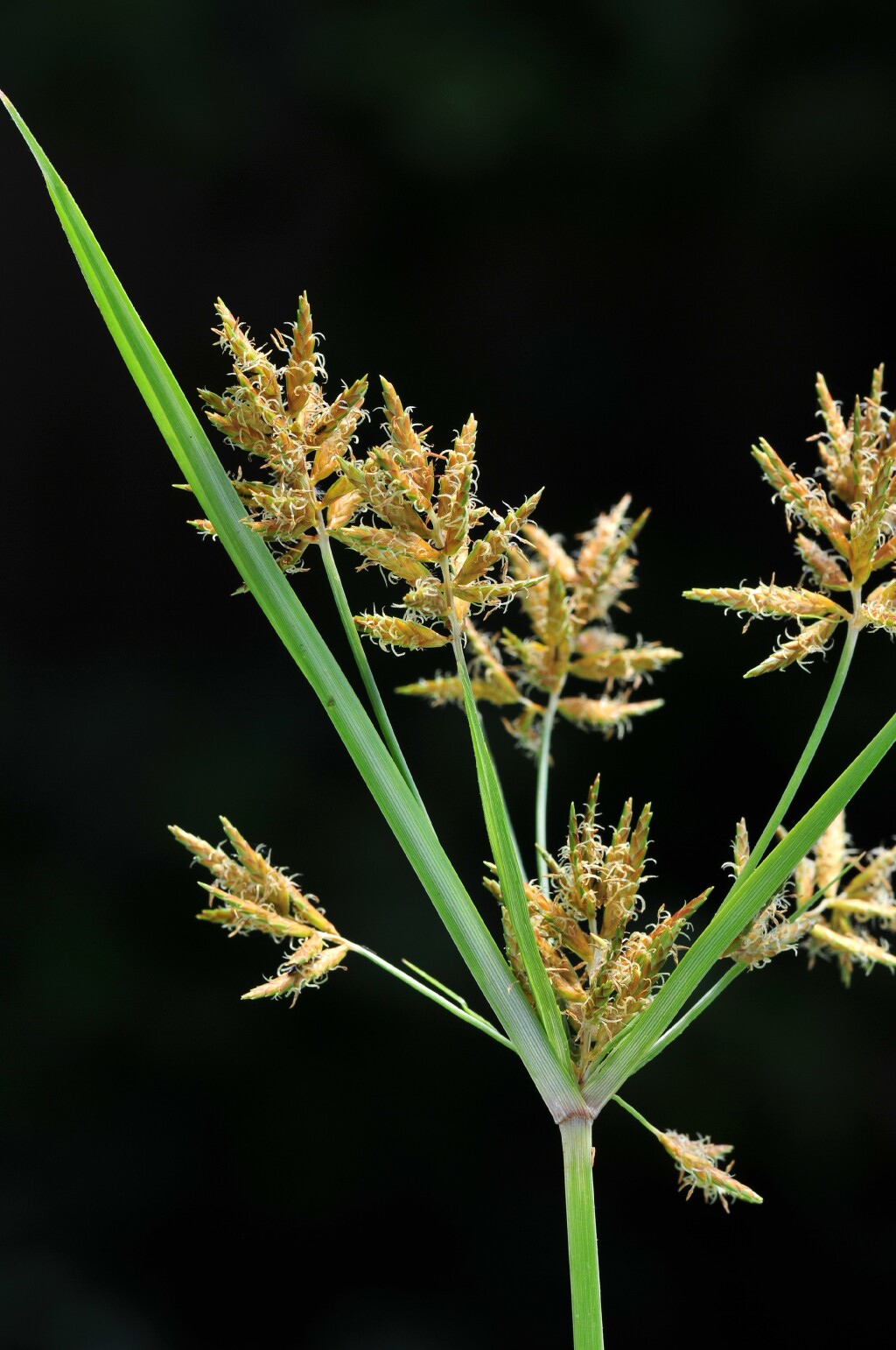Cyperus esculentus
L. Yellow NutgrassPerennial with slender rhizomes forming globose to ovoid tubers to 10 mm diam., with yellow-brown, smooth to slightly fibrous coat and fine greyish tomentum. Culms triquetrous, smooth or scabrous above, 10–70 cm high, 1–4 mm diam. Leaves not septate-nodulose, longer or shorter than culms, 3–6 mm wide. Inflorescence simple or compound with 5–10 primary branches to 10 cm long; spikes ovoid, to 3 cm long, to 2.5 cm diam., with rachis mostly minutely hispid; involucral bracts leaf-like, lowest 1 or 2 longer than inflorescence. Spikelets flattened, 5–14 per spike, 5–15 mm long, 1.5–2.5 mm wide in side view, 8–16-flowered; rachilla broadly winged, persistent; glumes very obtuse, with 3-nerved sides, yellow to dark golden brown, 2.5–3 mm long, 2.0–2.2 mm wide; stamens 3; style 3-fid. Nut trigonous, obovoid to oblong-obovoid, grey-brown, one-half as long as glume, c. 1.5 mm long, c. 0.8 mm diam. Flowers spring–summer.
VVP, GipP. Occasionally naturalised in Qld, NSW. Cosmopolitan but probably native of Mediterranean and Africa. Several collections known from suburban Melbourne (Brunswick South, Elsternwick, Footscray, Hawthorn, East Malvern, Melbourne ), and a single collection from south Gippsland. Growing in ditches and municipal garden beds. A serious weed of tropical and subtropical cultivation in others parts of the world.
Tubers of certain cultivars are eaten as 'Chufa' or 'Tiger Nuts'.
Wilson, K.L. (1994). Cyperaceae. In: Walsh, N.G.; Entwisle, T.J., Flora of Victoria Vol. 2, Ferns and Allied Plants, Conifers and Monocotyledons, pp. 238–356. Inkata Press, Melbourne.
 Spinning
Spinning

